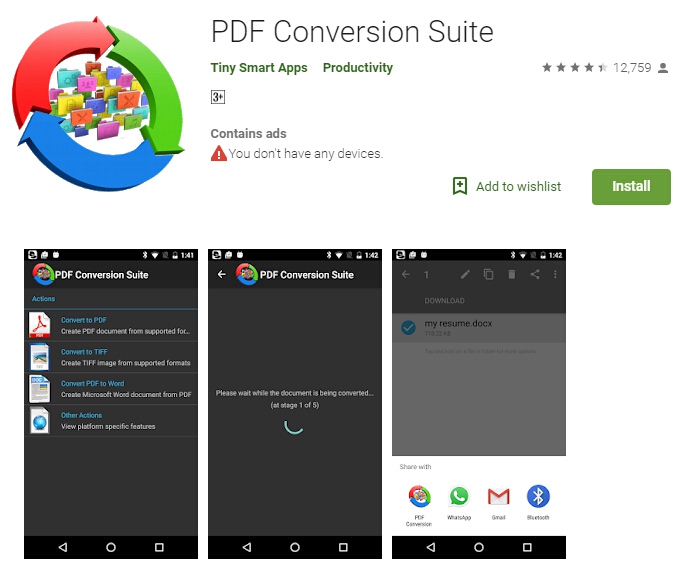Key Performance Indicator (KPI)

※ Download: What is a key performance indicator
Armed with such information, they can manage business operations more proactively, with the potential to gain competitive advantages over less data-driven rivals. Financial KPIs Financial measures are important in every organization—even nonprofits and municipalities.

For example, is it more important to see target, actual or your year-to-date performance, or a benchmark? All post secondary schools collect and report performance data in five areas — graduate satisfaction, student satisfaction, employer satisfaction, employment rate, and graduation rate. E-books published this month 130. This represents the time value T seconds below which users are not impeded by application response time.

What is a Key Performance Indicator (KPI)? - Using specialized KPI tracking software, these results can be sent to a single dashboard with a real-time KPI reporting tool. KPIs indicate whether an organization has attained its goals in a specific time frame.

Key Performance Indicators define factors the institution needs to benchmark and monitor. Assessment techniques provide the mechanism for measuring and evaluating the defined factors to evaluate progress or impact. KPIs specify what is measured and assessment techniques detail how and when it will be measured. KPI is a measure used to define and evaluate how successful an organization is. Typically is expressed in terms of making progress towards its long-term organizational goals. KPI incorporates information on the sources, calculations and definitions for each measure and sets out the timetable for submission of monthly data. KPIs assist an organisation to define and measure progress toward organisational goals and objectives. Once an organisation has analysed its mission and defined its goals, it needs to measure progress towards those goals. KPIs provide a measurement tool. In many cases, KPIs are used in projects and to measure service delivery. There are as many KPIs as ways in which they can be constructed. For example, in an Electronic Document and Records Management EDRM project, KPIs could be used to measure client uptake as the system rolls out. Another example is to measure the timeliness and quality of service delivery — in this case, KPIs may be used to measure that records services meet agreed delivery times for correspondence in accordance with a Service Level Agreement SLA. KPIs are quantifiable measurements that reflect the critical success factors of a business. They give a very focused view that is most useful for monitoring KM activities for progress in the desired direction. They do not substitute for the other measurement and evaluation activities listed above. Monitoring via KPIs can provide useful inputs to impact evaluation, but unless KM activities have a direct quantitative output such as sales results or direct cost savings mostly they do not they do not in themselves provide sufficient data to evaluate and assess the positive impact of KM. KPIs almost always need to be supplemented with some qualitative analysis to understand the background drivers for the trends and results displayed by the KPIs. It is a particular risk in using KPIs especially if you do not extend them with impact evaluation techniques that your KPIs give you an illusion of progress. KPIs typically monitor activities and quantifiable outputs such as documents created. KPIs can be good at reporting on KM efforts in tangible ways via numbers and trendlines, but they do not substitute for evaluating the performance of KM in terms of positive impact on the business. Counting beans or documents alone does not tell you whether your KM efforts are paying off. So KPIs are not enough and focusing on them should not distract from the real question, which is one of organizational performance. Key Performance Indicators Measurement is Not Static Secondly, at the beginning of any new KM initiative, your measurement system will evolve with the activity itself. You will have two, perhaps three measurement horizons. If this involves any complexity, such as multiple investments of money, time and effort from different places, you may need to monitor the investment inputs to ensure that they are taking place when required. You will focus on evidence of activity levels, and you will be most interested in examining the trends increasing. It is at this stage that you will extend your monitoring beyond activity levels and start to focus on monitoring and evaluating value creation from the activity. At the investment and adoption stages, value creation is not a major target of attention. This monitoring cycle can vary in duration from a few months to up to a couple of years depending on the type of activity and complexity of the change being introduced. For this reason, it is important to be able to build individual sets of KPIs whenever a new activity, program or system that is introduced, where the purpose of the KPIs is defined, the three stage activity cycle is defined and the duration of each stage is anticipated; and where the switch of focus between the three stages is properly planned and actioned. Examples of different KPIs for different types of initiative are given below together with a template to use in drawing them up. At the investment stage if being monitored , the trigger for a qualitative analysis will be a variation from plan. At the adoption stage, the trigger for a qualitative analysis will be a trend contrary to expectations. At the health stage, the trigger for a qualitative analysis will be any significant variation in activity levels or a large gap between a comparable external benchmark and the actual performance; because this is also the stage at which the KM activity is expected to create value, proxies for value creation need to be introduced, and you will need to make a link between your monitoring of KPIs and your business impact assessments, using the other measurement and evaluation mechanisms apart from KPIs such as story collection, MSC, management survey etc. Examples of these qualitative supporting activities for specific types of KM activity are given below. These are given for illustrative purposes only, and should be selected carefully to support your objectives and match your resources. Key Performance Indicators Definition KPIs assist an organisation to define and measure progress toward organisational goals and objectives. Once an organisation has analysed its mission and defined its goals, it needs to measure progress towards those goals. KPIs provide a measurement tool. In many cases, KPIs are used in projects and to measure service delivery. There are as many KPIs as ways in which they can be constructed. For example, in an Electronic Document and Records Management EDRM project, KPIs could be used to measure client uptake as the system rolls out. Another example is to measure the timeliness and quality of service delivery — in this case, KPIs may be used to measure that records services meet agreed delivery times for correspondence in accordance with a Service Level Agreement SLA. Key Performance Indicators Characteristics Other KPI characteristics identified in the literature are listed below. A KPI does not need to satisfy all of these characteristics to be useful to the organisation and characteristics may overlap. However, they also have a cost. In some cases eg system KPIs you may need to commission special reporting tools to generate the reports that you need. Somebody will need to collect data and analyse it. You may need to conduct an audit. If there are frequent changes you will need to follow up with qualitative analysis to explore the reasons. Hence it is essential only to choose the minimum number of KPIs to achieve your monitoring and evaluation objectives, and consistent with your resources. KPIs May Bias Apparent Activity Levels KPIs are often used to influence action, especially if they are linked to performance reviews and recognition and reward systems. This may sometimes produce unintended effects, or a tendency to game the KPIs being monitored, at the expense of important aspects of KM that cannot be easily measured. An example of an unintended effect might be the linking of storage costs with file quotas, where in order to limit the costs of storage space on servers, an organization might impose quotas, eg on email space or size of network drives available to a department. Faced with a KPI that penalizes certain behaviours, staff will often improvise a strategy that is invisible to the measurement system. An example of gaming KPIs might be the linking of rewards to numbers of knowledge assets submitted. Research shows that there are significant spikes in quantities of new documents contributed just before performance reviews, but also that the quality of the knowledge assets is extremely variable. Rewards and penalties should not normally be associated tightly to quantitative KPIs for this reason. Qualitative analysis, in particular the contextual information gathered from anecdotes and examples, is essential for understanding the true drivers behind numerical KPIs. Key Performance Indicators Example Participants for the study were drawn from two call centers in northwest Ohio. Call centers were chosen because they are becoming an increasingly common environment for a variety of organizations. As a result, many call center jobs are being created across the nation. In addition, because of their propensity for electronic monitoring of individual employees, call centers have available multiple and objective measures of key performance indicators. Why are KPIs important? The second call center B , employing approximately 75 customer service associates, was a local provider of cable television and internet services. Each call center gave objective performance data directly to the researchers, but permitted us to collect individual data via questionnaire from voluntary participants. In both cases we were able to collect similar data from both organizations on the individual employees and from the organizational performance records. Thus, for the analyses done here, the data from both centers were aggregated, resulting in a sample size of 145. The average age of the respondents across both samples was 32. Ninety percent of all respondents were female. What is the difference between KPI and Balanced Scorecard? Actually there is no much difference. What metrics does Balanced Scorecard include? And finally, the goal of Balanced Scorecard is to measure, yes, the performance of your business, focusing on some specific aspects. Using Balanced Scorecard How to use Balanced Scorecard concept to measure a business performance? You will need to pass tree simple steps. It is very important step, as it will affect all your future estimations, so be carefully and as some expert to help you or consider purchasing ready-to-use metrics. There should not be too many metrics and groups of metrics. It would be great if you will have four or five metric groups and about 3-5 metrics in each group. You will need to set the importance values for every metrics, you will need to describe the way, how do you measure the metric value, you will need to set a target values for metrics. The total values will tell you how the business is performing within the certain viewpoint. If you have these values you will be able to record performance, to benchmark your performance and to control your business. This provides a measurement of performance averaging the last 12 months as opposed to a measurement of performance for only one month. Use Key Performance Indicators in KM Initiatives Measuring and evaluating KM performance and impact can be used to serve a number of purposes. Some will be open and qualitative using techniques such as storytelling eg assessment of beneficial impact needs to be open so that unanticipated benefits can be captured ; some will be closed and qualitative using techniques such as surveys with assessment questions eg assessment by managers of the degree to which KM supports business objectives or has met agreed targets ; some will be closed and quantitative using mechanisms such as activity reports eg determining the degree of takeup of a KM activity. This guide focuses on just one aspect of KM measurement, ie the use of key performance indicators KPIs to monitor progress and perhaps control the release of resources. It is important to recognize that this forms only a part of the whole KM measurement and evaluation picture which is touched on, but not dealt with in any depth here.
Planned value PV 65. Army Effectiveness and Progress in the Vietnam War. This is possible only when your chosen KPI has the ability to provide recommendation s for action which can highly impact your external goal. Inbound links to website 104. Without setting up goals and strategies beforehand, you will have hard time coming up with KPIs. What are 'Key Performance Indicators - KPI' Key performance indicators KPI are a set of quantifiable measures that a company uses to gauge its performance over time. A good KPI also needs to realistically attainable, and so should include a time frame for completion. Inbound calls handled per representative 25. Net profit margin 39. The next step is to determine the specific conditions that will facilitate the meeting of set goals within a specific timeframe. However, in general, the number what is a key performance indicator ranges from four to 10 for most businesses. In simple terms, KPIs provide a way to measure how well companies, business units, projects or individuals are performing in relation to their strategic goals and objectives.

















